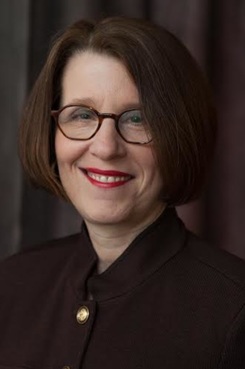Secret to Success: Your Business Needs a Purpose and a Plan
Are you looking for ways to simplify decision-making for your business or your life? Instead of agonizing endlessly, would you prefer having standards that automatically and organically eliminate some options while highlighting the efficacy and appeal of others? Do you know where your business is headed or are you focused on making the next payroll?
January 03, 2018 at 04:20 PM
6 minute read

Are you looking for ways to simplify decision-making for your business or your life? Instead of agonizing endlessly, would you prefer having standards that automatically and organically eliminate some options while highlighting the efficacy and appeal of others? Do you know where your business is headed or are you focused on making the next payroll?
The secret to success in this arena is having a purpose and a plan.
Your decisions will become easier when you have a mission statement and strategy for your business and your life. In “The 7 Habits of Highly Effective People,” Stephen Covey wrote about the benefits of a personal mission statement: “… personal mission statements based on correct principles are like a personal constitution, the basis for making major, life-directing decisions, the basis for making daily decisions in the midst of the circumstances and emotions that affect our lives.”
An organizational mission statement can similarly serve as a compass when emotions, competing interests and financial risk hang in the balance. A decision made by James Burke, CEO of Johnson & Johnson is chronicled in “The Greatest Business Decisions of All Time” by Verne Harnish and the editors of Fortune Magazine.
This is the situation Burke was faced with: On Sept. 29, 1982, two people in Chicago died of cyanide poisoning. Investigators determined that both had taken Tylenol. Over the next several days, five more people died in the Chicago area and on Oct. 5, Tylenol laced with a different poison, strychnine, was found in California. On Oct. 6, Burke ordered the removal of all 31 million bottles of Tylenol capsules on American store shelves. The Washington Post reported that heads of the FBI and the FDA opposed the wholesale recall as an overreaction.
This decision cost Johnson & Johnson $100 million immediately and caused a devastating blow to its market share. However, under Burke's leadership the company was able to survive and later recoup its lost market and save its reputation.
Why did James Burke make a decision that was seen as unnecessary and how did he convince the shareholders? According to Harnish, “Burke's management of the matter had its roots in a crucial decision he had made years earlier to apply the company's credo to all situations.” The credo states: “We believe our first responsibility is to the doctors, nurses and patients, to mothers and fathers and all others who use our productions and services.”
For Burke, the decision became easy because the credo places consumers first and, consequently, shareholders last.
To help me understand the mechanics involved in developing a mission statement, I interviewed John Tooher, managing partner of HeadRoom in Media. Tooher is a strategy planning consultant who helps organizations with medium to long-term planning, and to define where their futures lie. Along with his partner Dan Lievens, Tooher created a tool for helping his clients generate a mission statement but was quick to point out that a mission statement without a strategy is akin to choosing a destination without a map to get there. Together, “purpose and strategy become a reference for decision-making.”
Tooher describes a mission statement as the compelling reason to start a business. It's the “why” of it all and can also be the well you go to find taglines, articulate your value proposition and even justify your existence. A good mission statement, he says, should be in the language of the client or customer, be realistic and motivational. This creates momentum, engagement and enthusiasm. It improves your business in many ways. For example, when a company has a mission and plan, hiring is easy because “there is a story to tell, an adventure to be had.” Conversely, hiring can be difficult when centered on compensation, benefits and holidays which are important but not compelling.
Tooher gave an example of a company he worked with that was extremely busy with small jobs but the founders were more interested in working with bigger companies on large-scale, higher status projects. What was stopping them? They were too busy with small jobs to go after the big ones. Ultimately, they were able to set a direction by first deciding who they wanted to serve, create a strategic plan and in a short amount of time began to get the work they wanted.
We can get so bogged down in the tyranny of being busy that we forget why we chose a career or started an enterprise in the first place.
To create a mission statement for your business, Tooher suggests answering five questions: who are you?, what do you do?, how do you do it?, who do you do it for?, what is the end result?
Tooher said he was surprised by how many people think questions 2 and 3 are the same—the “what” and “how” of your business. But how you do your work is the great differentiator. This is what separates you from the pack and is a big part of your value proposition.
If you are a lawyer, for example, that is what you do. How you do it is a glimpse into your professional values. And you should be able to articulate this crucial core of any endeavor. When you answer this question, you must think about what you believe in, what matters to your clients and the factors, metrics and benchmarks you will use to measure success. You will also be a more effective marketer when you can speak easily about how you help people.
Going back to Johnson & Johnson, the company sells products, and the “how” was by placing the consumer first, even when it cost a fortune and a successful rebound was not guaranteed. When I began to dream of a name for my business, the one that felt like it said everything was “Achievement by Design” because achievement does not happen by default, only by design. My mission to help people achieve their dreams and goals, along with co-creating a plan, is embodied in my business name.
Regardless of whether you are Johnson & Johnson, founded in 1886, or a startup, it is never too late to create a mission statement and strategy for success. The future for you and your business lies in your ability to envision, articulate and execute a purpose and a plan. The perfect time to start is now.
Dena Lefkowitz, Esq., PCC, is a certified professional coach who helps clients improve networking and marketing skills, make successful career transitions, and develop the skills necessary to lead. Having practiced law for 25 years in private practice and in-house, she understands the challenges new and seasoned lawyers face. Lefkowitz has successfully coached a best-selling author, lawyers, accountants and chief executives. Firms have also hired Lefkowitz to work directly with lawyers at all phases of their careers to improve performance and increase their contributions to the firm. For more information, visit www.achievementbydesign.com.
This content has been archived. It is available through our partners, LexisNexis® and Bloomberg Law.
To view this content, please continue to their sites.
Not a Lexis Subscriber?
Subscribe Now
Not a Bloomberg Law Subscriber?
Subscribe Now
NOT FOR REPRINT
© 2025 ALM Global, LLC, All Rights Reserved. Request academic re-use from www.copyright.com. All other uses, submit a request to [email protected]. For more information visit Asset & Logo Licensing.
You Might Like
View All


From Courtroom to Cradle: Practical Advice for Young Attorneys About Parental Leave
7 minute read
Trending Stories
- 1Inside Track: Cooley's Modest Proposal to Make Executives Safer
- 2Justified Termination Does Not Bar Associate Attorney From Unemployment Benefits, State Appellate Court Rules
- 3Effective Termination Strategies in Today’s Troubled Condo Market
- 4AI and Land Use—a Perfect Match in Real Estate Heaven
- 5New Atlanta Litigation Firm Breaks Away From Swift Currie
Who Got The Work
J. Brugh Lower of Gibbons has entered an appearance for industrial equipment supplier Devco Corporation in a pending trademark infringement lawsuit. The suit, accusing the defendant of selling knock-off Graco products, was filed Dec. 18 in New Jersey District Court by Rivkin Radler on behalf of Graco Inc. and Graco Minnesota. The case, assigned to U.S. District Judge Zahid N. Quraishi, is 3:24-cv-11294, Graco Inc. et al v. Devco Corporation.
Who Got The Work
Rebecca Maller-Stein and Kent A. Yalowitz of Arnold & Porter Kaye Scholer have entered their appearances for Hanaco Venture Capital and its executives, Lior Prosor and David Frankel, in a pending securities lawsuit. The action, filed on Dec. 24 in New York Southern District Court by Zell, Aron & Co. on behalf of Goldeneye Advisors, accuses the defendants of negligently and fraudulently managing the plaintiff's $1 million investment. The case, assigned to U.S. District Judge Vernon S. Broderick, is 1:24-cv-09918, Goldeneye Advisors, LLC v. Hanaco Venture Capital, Ltd. et al.
Who Got The Work
Attorneys from A&O Shearman has stepped in as defense counsel for Toronto-Dominion Bank and other defendants in a pending securities class action. The suit, filed Dec. 11 in New York Southern District Court by Bleichmar Fonti & Auld, accuses the defendants of concealing the bank's 'pervasive' deficiencies in regards to its compliance with the Bank Secrecy Act and the quality of its anti-money laundering controls. The case, assigned to U.S. District Judge Arun Subramanian, is 1:24-cv-09445, Gonzalez v. The Toronto-Dominion Bank et al.
Who Got The Work
Crown Castle International, a Pennsylvania company providing shared communications infrastructure, has turned to Luke D. Wolf of Gordon Rees Scully Mansukhani to fend off a pending breach-of-contract lawsuit. The court action, filed Nov. 25 in Michigan Eastern District Court by Hooper Hathaway PC on behalf of The Town Residences LLC, accuses Crown Castle of failing to transfer approximately $30,000 in utility payments from T-Mobile in breach of a roof-top lease and assignment agreement. The case, assigned to U.S. District Judge Susan K. Declercq, is 2:24-cv-13131, The Town Residences LLC v. T-Mobile US, Inc. et al.
Who Got The Work
Wilfred P. Coronato and Daniel M. Schwartz of McCarter & English have stepped in as defense counsel to Electrolux Home Products Inc. in a pending product liability lawsuit. The court action, filed Nov. 26 in New York Eastern District Court by Poulos Lopiccolo PC and Nagel Rice LLP on behalf of David Stern, alleges that the defendant's refrigerators’ drawers and shelving repeatedly break and fall apart within months after purchase. The case, assigned to U.S. District Judge Joan M. Azrack, is 2:24-cv-08204, Stern v. Electrolux Home Products, Inc.
Featured Firms
Law Offices of Gary Martin Hays & Associates, P.C.
(470) 294-1674
Law Offices of Mark E. Salomone
(857) 444-6468
Smith & Hassler
(713) 739-1250





